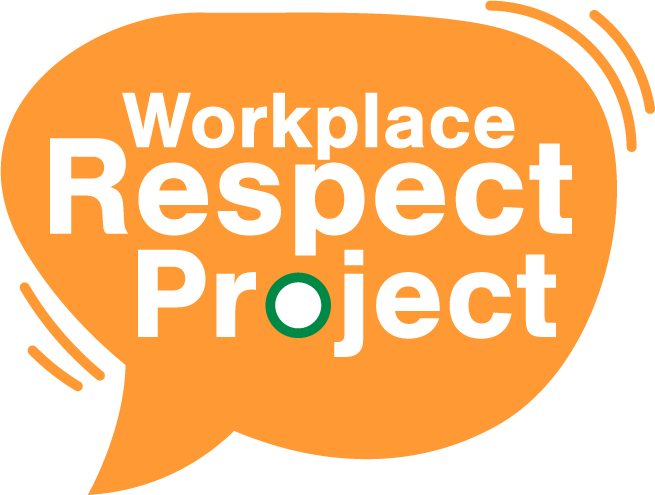What is workplace sexual harassment?
Workplace sexual harassment:
- Is an unwelcome sexual advance, unwelcome request for sexual favours, or other unwelcome conduct of a sexual nature.
- Makes the person harassed feel offended, humiliated or intimidated. It doesn’t matter if the harasser didn’t intend for their conduct to cause this reaction.
- Occurs where a reasonable person would have anticipated the person harassed would feel offended, humiliated or intimidated in the circumstances. If most people would be likely to feel this way, then this could be enough.
Workplace sexual harassment is when a worker experiences sexual harassment in connection with their work.
Sometimes it can include behaviour that occurs outside of the workplace or work hours.
Who is a worker?
You do not need to be an employee for conduct to be considered workplace sexual harassment. Some other types of workers that may be able to make a claim include:
- a contractor or subcontractor;
- an employee of a contractor or subcontractor;
- an employee of a labour hire company;
- an outworker;
- an apprentice or trainee;
- a work experience student; or
- a volunteer, except for volunteers at a volunteer association which has no employees.
If you aren’t sure what type of worker you are, you might want to read our Q&A: Employee types for WA employees.
What counts as “at work” or “the workplace”?
‘At work’ covers various situations beyond just your workplace and depends on the context of the sexual harassment. You don’t have to be physically at your workplace to be considered ‘at work.’ Some instances of being ‘at work’ might include:
- during your lunch break;
- attending a work event outside regular work hours;
- working from home;
- using emails or messaging for work discussions outside work hours; and
- performing work-related tasks.
Legally, many situations could be deemed ‘at work,’ even if it isn’t obvious that it’s a part of the workplace. If you notice any connection to your work, it’s worth exploring or seeking legal advice. This connection might exist even if the harassment occurs outside your usual work location or working hours.
What if the person who is sexually harassing me at work is not a coworker?
It can still be workplace sexual harassment if someone other than a co-worker or other employee sexually harasses you at work.
If the sexual harassment happened ‘at work’, then it generally does not matter who sexually harassed you.
Some examples of the kinds of people that aren’t employees but could still be ‘at work’ with you include:
- a client;
- a customer;
- a patron;
- a visitor;
- a contractor or subcontractor;
- a volunteer; and
- an intern.
Anyone in any job, industry, or position can face workplace sexual harassment, it is likely to be against the law and it is never okay.
This page is provided as general information only and is not intended to be a substitute for legal advice. By using the information on this page, you agree to our full disclaimer.
What can workplace sexual harassment look like?
Workplace sexual harassment includes a range of behaviours. It can be one-off, or a number of incidents involving one or multiple harassers, including managers, co-workers, customers or clients. It is not limited to a physical workplace.
Workplace sexual harassment might look like:

Staring or leering

Repeated requests for dates or sex

Sharing sexual images, emails, or text messages

Asking personal questions about a person’s sex life or body

Making sexually suggestive, offensive comments and jokes

Unwelcome touching, hugging or kissing
What should I know if I’m experiencing workplace sexual harassment?
Firstly, we are so glad you are here on our website and have found this resource. We commend you for taking action to find out about your legal rights and options and learn more about workplace sexual harassment.
It’s up to you if you want to do anything further, and you don’t have to do anything at all. However, this resource provides some information and options to help you make those decisions.
If you have been targeted by sexual harassment, there are a few important things we need you to know:
1. It’s not your fault.
People who experience workplace sexual harassment might feel like it’s their fault, but it’s not. Sexual harassment happens because of gender inequality and other forms of unfair treatment, not because of how someone dresses or acts. Don’t blame yourself.
2. You have the right to a safe workplace.
Everyone deserves a workplace free of sexual harassment. Sometimes, it might be unclear if what you’re experiencing qualifies as sexual harassment. It doesn’t have to involve physical contact; other kinds of sexual harassment like comments, jokes, or text messages can be just as upsetting to experience.
Remember:
- the way you feel is valid;
- sexual harassment is never acceptable in any form; and
your employer is obligated to protect you from it, whether it comes from co-workers, customers, or clients.
3. Help and support are available.
Feeling alone and isolated is normal if you’ve experienced workplace sexual harassment. However, you’re not alone—many others have gone through similar situations. There are resources and support available to help you feel more connected and to understand the options you have for dealing with the harassment.
What can I do about workplace sexual harassment?
Knowing your options is important, but it’s even more important to know that what you decide to do next is up to you.

Practice self care and seek support

Seek legal advice

Make a report to your employer

Make a report to an external agency
